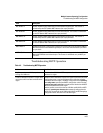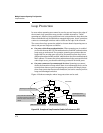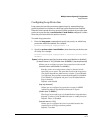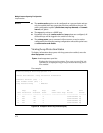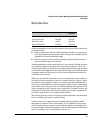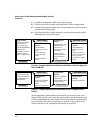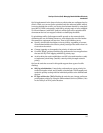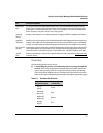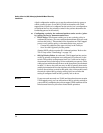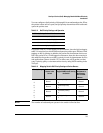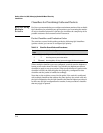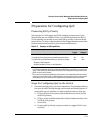
5-5
Quality of Service (QoS): Managing Bandwidth More Effectively
Introduction
QoS is implemented in the form of rules or policies that are configured on the
switch. While you can use QoS to prioritize only the outbound traffic while it
is moving through the switch, you derive the maximum benefit by using QoS
in an 802.1Q VLAN environment (with 802.1p priority tags) or in an untagged
VLAN environment (with DSCP policies) where QoS can set priorities that
downstream devices can support without re-classifying the traffic.
By prioritizing traffic, QoS supports traffic growth on the network while
optimizing the use of existing resources—and delaying the need for further
investments in equipment and services. That is, QoS enables you to:
■ Specify which traffic has higher or lower priority, regardless of current
network bandwidth or the relative priority setting of the traffic when it is
received on the switch.
■ Change (upgrade or downgrade) the priority of outbound traffic.
■ Override “illegal” packet priorities set by upstream devices or applications
that use 802.1Q VLAN tagging with 802.1p priority tags.
■ Avoid or delay the need to add higher-cost NICs (network interface cards)
to implement prioritizing. (Instead, control priority through network
policy.)
QoS on the switches covered in this guide support these types of traffic
marking:
■ 802.1p prioritization: Controls the outbound port queue priority for
traffic leaving the switch, and (if traffic exits through a VLAN-tagged port)
sends the priority setting with the individual packets to the downstream
devices.
■ IP Type-of-Service (ToS): Enables the switch to set, change, and honor
prioritization policies by using the Differentiated Services (diffserv) bits
in the ToS byte of IPv4 packet headers.



